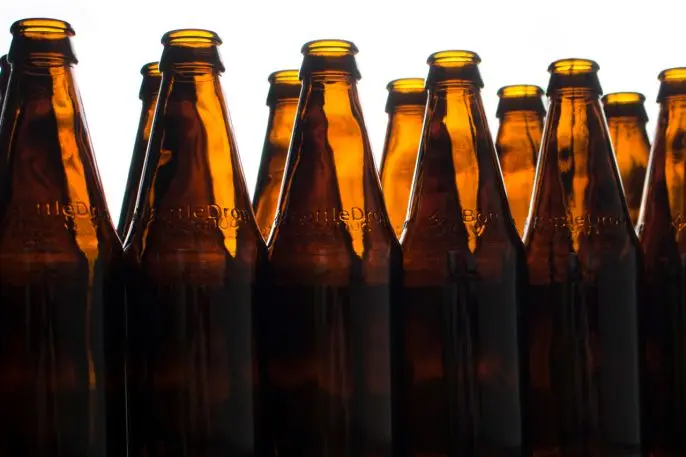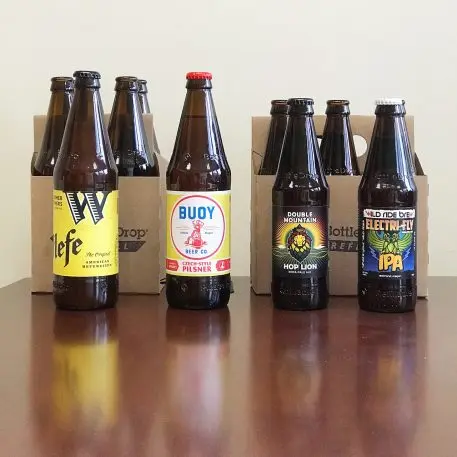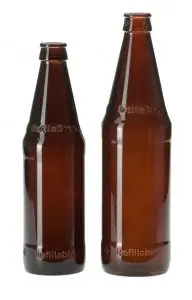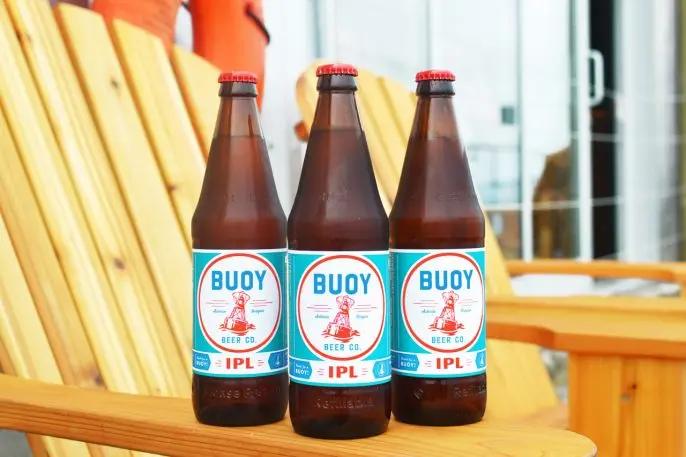Sometimes the best ideas are old ideas. While McDonalds and Starbucks are trying to develop a compostable cup of the future, the state of Oregon has introduced a new glass beer bottle that could redefine the way we drink beer across the country.
The bottle’s secret? It can be reused. Once customers are done drinking their beer, the bottles can be handed in, washed, and used again. This process can be rinsed and repeated up to 25 times, which its creators believe would lead to a 92% savings in carbon footprint versus merely recycling aluminum or glass. Why? It takes a lot less energy to wash out a bottle and then heat an oven to 2,600 degrees Fahrenheit to melt and mold a new one.
“It’s a plus economically, and environmentally,” says Jules Bailey, chief stewardship officer and head of communications at the Oregon Beverage Recycling Cooperative (OBRC).

Reusing bottles is not a new idea–and many countries across the world, the ritual is still in practice. But as Bailey explains, it’s fallen out of fashion in the U.S. While reusable bottles peaked in the 1930s and ’40s, he argues that the booming craft brew movement is the most recent culprit, at least in the world of beer. Over the last few decades, many small, hyper-regional breweries gained prominence, while the larger regional breweries lost their monopolies that made collection worthwhile.
“As craft took off . . . no one had the size or scale to own a bottle washer and wash bottles,” says Bailey. “Additionally, there wasn’t a collection mechanism to get the bottles back and to the right companies. So the system collapsed. It was a market reality.”

Almost two decades after reusing bottles was discontinued in Oregon, the OBRC began revisiting the idea. Technically, OBRC works as a nonprofit in service of the beverage industry itself, but it’s the exclusive collector and recycler of all glass bottles across Oregon. That means it runs everything from the trucks to the collection facilities in a state where a whopping 90% of all glass bottles are recycled, thanks largely to a 10¢ refund per container.
“We thought, if we’re touching all these containers anyway . . . we could bring refillables back, and it wouldn’t be that hard,” says Bailey. “The only thing left to solve was, we have hundreds of breweries. We can’t logistically track the bottle of every company. We needed an industry-standard bottle.”
“Now we had to design the bottle,” he says.
For the bottle design process, OBRC teamed up with Owens-Illinois, one of the largest glass bottle manufacturers in the world, which was already processing OBRC’s crushed glass to make recycled bottles.
“We thought, they make glass bottles, we have to be prepared. They’re gonna be pretty unhappy when they hear we’re using refillable bottles,” says Bailey. “I get a call from one of their executives. I’m like, here we go. But the first words out of the guy’s mouth are, ‘This is the greatest thing we’ve seen. We’re all in.'” From there, the two groups set up weekly meetings to build a new bottle.

Over time, the team developed about 60 prototypes of a 12 oz. and 500 ml bottle. Not just any glass bottle makes sense for reuse. You want something that can last, because every wash/reuse cycle, the bottle’s carbon footprint is cut in about half. If it cracks or chips in the slightest way, it’s no longer reusable.
This led the team to develop what Bailey calls a “small tank” of glass–a bottle that’s hefty, reinforcing itself through material alone. Around where the label goes, a one-eighth of a millimeter indentation will probably be unnoticeable to your eye, but it allows labels to be removed and affixed, with less chance of damaging the surface along the way.
These design considerations were relatively obvious, but the bottle’s silhouette was a great debate. OBRC wanted the bottle to be recognizable to the public, and self-advertising that it could be reused. This was tricky. “We tried to get creative and different, but the more we strayed from a long neck or heritage, people would say, ‘that doesn’t say beer to me.’ It constrained how far afield we were able to go,” says Bailey. “We put a shape out there and people would say, ‘that’s a kombucha bottle, not a beer bottle.'” Another failed design had a rounded head that everyone loved, until one person pointed out, it looked anthropomorphic, like the Mrs. Butterworth bottle.
The other challenge was not just packaging this bottle to the public, but packaging it to its real customers: the brewers themselves. The reusable bottles would ultimately be purchased and filled by these brewers, just like any other bottle, but only if brewers actually liked the bottles enough to pour their brands into them. OBRC planned to drive down the price to be roughly equivalent or cheaper than alternatives, but the bottle’s most superficial aspects mattered, too.

In one instance, OBRC thought they had a great-looking bottle, but that bottle looked a lot like a popular, distinctive brewer in the state, which made other brewers upset.
“You’re never going to make everybody happy,” says Bailey. “I think brewers are often wedded to their own bottles. So we tried to pick something that everybody thought was kind of cool, and also didn’t look like anyone’s specific bottle.”
For now, seven Oregon brewers have started using the OBRC bottles. It’s a slow start, but that gives the organization time to scale its own operations, investing in its own bottle cleaning hardware, and educating consumers about the new option. And in the meantime, Bailey hopes that the good idea can spread to other states. Organizations in California, New Jersey, and New York have all expressed interest in launching similar operations, perhaps even licensing this same bottle design from OBRC along the way. That would be great news to bottle reuse. Because a standard bottle would mean that if and when brews crossed state lines, the bottles would still be part of a greater reclamation infrastructure.
“We made this bottle with the idea that it would eventually become a national industry-standard bottle,” says Bailey. “We don’t need to make a profit on it. We just can’t lose money over time.”
Recognize your brand’s excellence by applying to this year’s Brands That Matter Awards before the early-rate deadline, May 3.
